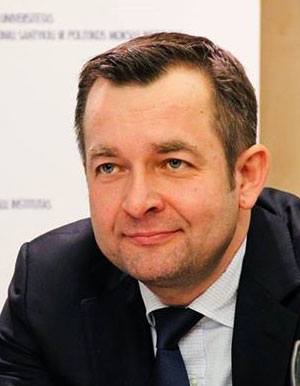
Ramūnas Vilpišauskas is a director and professor of the Institute of International Relations and Political Science, Vilnius University. From 2004-2009 he has worked as a Chief Economic Policy Advisor to the President of Lithuania Valdas Adamkus and the Head of Economic and Social Policy Group, he has also been appointed to coordinate the team of advisors to the President (2006-2009). His main research interests include the political economy of European integration, policy analysis of public sector reforms, international political economy.
He has been a visiting fellow at several universities in the USA (Syracuse University) and Canada (Carleton University), has been a Fulbright scholar at the Columbia University, conducted research at a number of European institutions including the European University Institute (Florence). In addition to Master’s degree in International Relations and Diplomacy from Lancaster University (UK) and Ph.D. in social sciences (international political economy) from Vilnius University, he has graduated International Trade and Commercial Diplomacy program at Carleton University (Ottawa), Swedish Institute Management Program (Stockholm). His recent publications include: “Eurozone Crisis and European Integration: Functional Spillover, Political Spillback?”, in Journal of European Integration, vol. 35, no. 3, April 2013, p. 361-373, “Lithuania’s double transition after the re-establishment of independence in 1990: coping with uncertainty domestically and externally”, in Oxford Review of Economic Policy, Summer 2014, vol. 30, no. 2, pp. 223-236, “Fiscal consolidation and structural reforms in Lithuania in the period 2008-2012: from grand ambitions to hectic fire fighting” (co-author) in International Review of Administrative Sciences, August 2015, vol. 81 (3), pp. 522-540; ”European Union or Eurasian Union? Dilemma for the Eastern Partnership countries and the limits of EU’s influence”, in The European Neighborhood Policy in a Comparative Perspective: Models, Challenges, Lessons, S. Gstohl (ed.), Farnham: Ashgate, 2016, p. 259-281.

